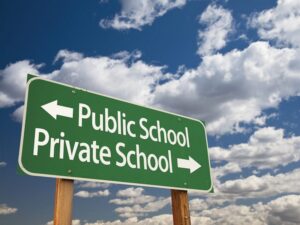
Understanding the Voucher Program
When I was a child, I thought that when I grew up, I would just be able to send my kids to school each morning and then go to work. Easy peasy! Now that I’m a mom with children of my own, I know what a stressful, frustrating situation choosing a school can be.
We have so many school options in our area: public, private, parochial, charter, magnet, and virtual. While paid schooling was once reserved for those families who could pay all of the tuition up front, in cash, the voucher system is now making it possible for more families to attend private schools.
What are vouchers?
The term “vouchers” refers to the Louisiana State Scholarship Program. Started in New Orleans, the program assists thousands of students statewide by paying for non-public school tuition.
The Louisiana State Scholarship Program, or voucher system, was created to give families school choice. Families whose children attend a failing school can apply for a scholarship. Research indicates that students in the program are growing academically faster than the state average. The percentage of Louisiana students graduating from high school and earning an 18 or better on the ACT has more than doubled in the last three years. School principal, Linda Stone, praises the program for allowing students who may otherwise not have an opportunity to attend a private school, to have that chance.
How can your child get a voucher?
Students are awarded vouchers through an application and lottery process. Eligibility requirements for families include being a Louisiana resident, having a household income that does not exceed 250 percent of the federal poverty line, and either entering kindergarten or currently enrolled in a school with a C, D, or F rating.
What are the benefits?
There are many positive aspects to the voucher system. For instance, the voucher system gives you and your child the opportunity to have a choice of schools that may better meet his or her needs. Also, once your child is accepted to the program, he or she can request transfer to another school accepting vouchers. Finally, your child will also receive access to schools that may emphasize his or her interests.
However, there are a few setbacks. For instance, a student may not be matched with a voucher through the lottery, and there is an increased burden on the schools accepting children on a voucher through additional paperwork and compliance issues with testing. Also, the tuition provided through the program may not be the same as the tuition the school charges, creating a budgetary gap for schools.
There are other limitations to vouchers as well. Last school year, over 10,000 students applied for the scholarship program. Approximately 7,000 students were awarded the vouchers and nearly 120 schools participated. Although there is a chance that your child may not be awarded a voucher, Stone suggests, “It’s worth doing the application. Be persistent if your child doesn’t get in the first time. Mention that there are other siblings, to try to keep siblings together. Families should also keep in mind the transfer procedure. If you match and you accept any school you are matched to, you can ask for a transfer within the program later,” Stone says. And most importantly to note, “Students remain eligible without having to reapply as long as their household remains within eligibility parameters,” she adds.
Finally, schools may face sanctions if there is a high turnover. In a report from July 2018, turnover for voucher students was 16.5 percent. The voucher policy states that schools who have a turnover rate of 33 percent for two years in a row will be prohibited from accepting new voucher students the following year. The idea is that, if the turnover rate is that high, something may be wrong.
What about special education?
When it comes to special education, there is a unique collection of pros and cons for students with special needs and schools. Participating schools do not have to provide special education services. Parents may even be asked to sign a waiver relinquishing special education services. But Stone’s school, Greater Baton Rouge Hope Academy, has a reputation for meeting the needs of unique learners. She praises the voucher program for providing the school’s brand of differentiated instruction to students who would otherwise not be able to attend for financial reasons.
However, she does point out that if a school chooses to participate in the voucher system, they must accept the students who match to the voucher. In theory, this is wonderful, but as Stone points out, this could lead to a student being matched with a school that does
not have the resources to fully meet his or her needs.
When can we apply?
Applications are accepted during the school year prior to the year that the student can use the scholarship. For students in the Baton Rouge area, the application process opens January 2019 and closes in February for the 2019-20 school year.
For additional information about the Louisiana Scholarship Program and other assistance programs, visit louisianabelieves.com.■





